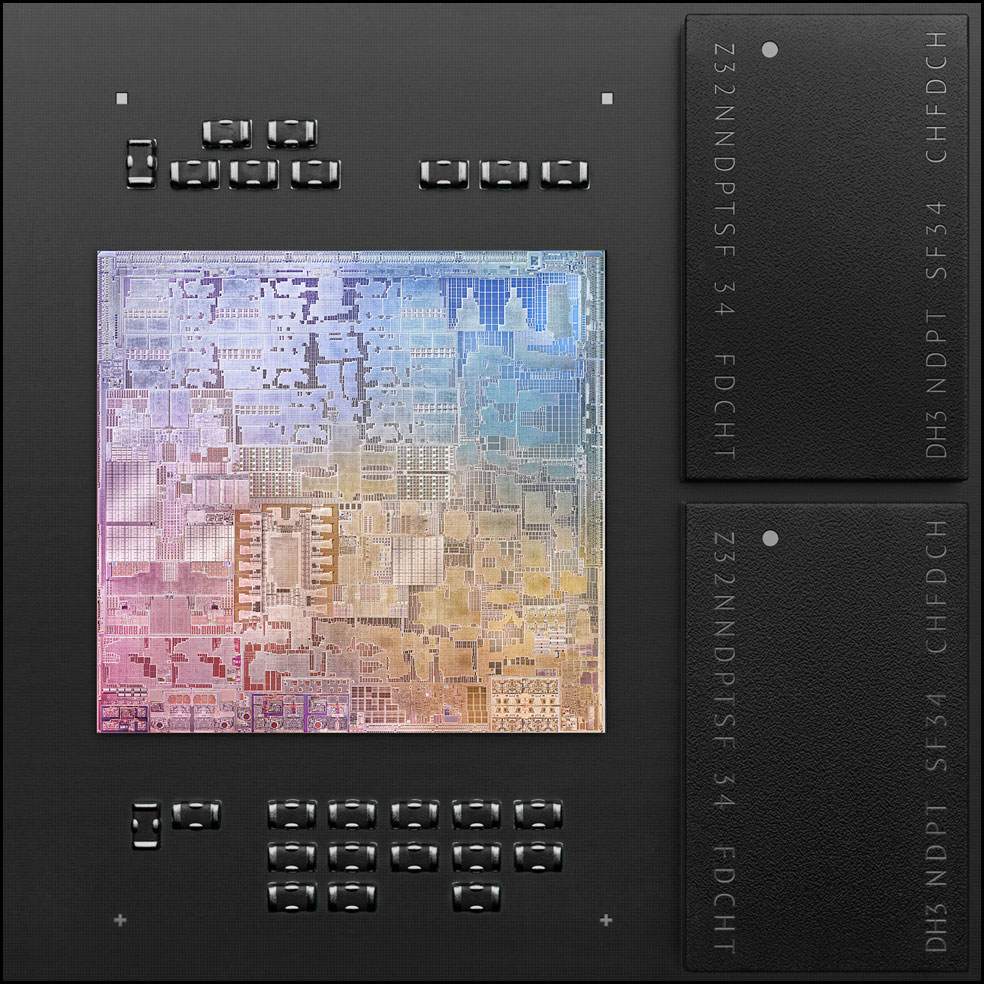Apple is reportedly developing a number of Apple Silicon chip variants with significantly higher core counts relative to the M1 chips that it uses in today’s MacBook Air, MacBook Pro and Mac mini computers based on its own ARM processor designs. According to Bloomberg, the new chips include designs that have 16 power cores and four high-efficiency cores, intended for future iMacs and more powerful MacBook Pro models, as well as a 32-performance core top-end version that would eventually power the first Apple Silicon Mac Pro.
The current M1 Mac has four performance cores, along with four high-efficiency cores. It also uses either seven or eight dedicated graphics cores, depending on the Mac model. Apple’s next-gen chips could leap right to 16 performance cores, or Bloomberg says they could opt to use eight or 12-core versions of the same, depending primarily on what kinds of yields they see from manufacturing processes. Chipmaking, particularly in the early stages of new designs, often has error rates that render a number of the cores on each new chip unusable, so manufacturers often just “bin” those chips, offering them to the market as lower max core count designs until manufacturing success rates improve.

Apple’s M1 system on a chip. Image Credits: Apple
Regardless of whether next-gen Apple Silicon Macs use 16, 12 or eight-performance core designs, they should provide ample competition for their Intel equivalents. Apple’s debut M1 line has won the praise of critics and reviewers for significant performance benefits over not only their predecessors, but also much more expensive and powerful Macs powered by higher-end Intel chips.
The report also says that Apple is developing new graphics processors that include both 16 and 32-core designs for future iMacs and pro notebooks, and that it even has 64 and 128-core designs in development for use in high-end pro machines like the Mac Pro. These should offer performance that can rival even dedicated GPU designs from Nvidia and AMD for some applications, though they aren’t likely to appear in any shipping machines before either late 2021 or 2022 according to the report.
Apple has said from the start that it plans to transition its entire line to its own Apple Silicon processors by 2022. The M1 Macs now available are the first generation, and Apple has begun with its lowest-power dedicated Macs, with a chip design that hews closely to the design of the top-end A-series chips that power its iPhone and iPad line. Next-generation M-series chips look like they’ll be further differentiated from Apple’s mobile processors, with significant performance advantages to handle the needs of demanding professional workloads.



